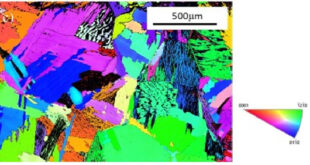James D. Holdeman, James R. Clisset, Jeffrey P. Moder
Heat and Mass Transfer , February 2012, Volume 48, Issue 2, pp 413-424
Abstract
The objective of this study was to demonstrate and analyze empirical model results for jet-in-crossflow configurations which are typical in gas turbine combustors. Calculations in this paper, for opposed rows of round holes in both inline and staggered arrangements, were made with an Excel® spreadsheet implementation of a NASA-developed empirical model for the mean conserved scalar field. Results for cases of opposed rows of jets with the orifices on one side shifted by half the orifice spacing shows that staggering can improve the mixing, particularly for cases that would overpenetrate if the orifices were in an aligned configuration. For all cases investigated, the dimensionless variance of the mixture fraction decreased significantly with increasing downstream distance. The variation between cases at a given downstream location was smaller, but the “best” mixers for opposed rows of jets were found to be inline and staggered arrangements at an orifice spacing that is optimum for inline jets.
Go To Journal
Author Affiliations:
James D. Holdeman (3,5), James R. Clisset (2,4), Jeffrey P. Moder (1)
1Combustion Branch, Aeropropulsion Division, National Aeronautics and Space Administration, Glenn Research Center, Cleveland, OH, 44135, USA
4U.S. Army Yuma Proving Ground, Yuma, AZ, USA
2University of Florida, Gainesville, FL, 32611, USA
5National Aeronautics and Space Administration, Glenn Research Center, Cleveland, OH, 44135, USA
35228 Meadow Moss Ln, N. Ridgeville, OH, 44039, USA
 Advances in Engineering Advances in Engineering features breaking research judged by Advances in Engineering advisory team to be of key importance in the Engineering field. Papers are selected from over 10,000 published each week from most peer reviewed journals.
Advances in Engineering Advances in Engineering features breaking research judged by Advances in Engineering advisory team to be of key importance in the Engineering field. Papers are selected from over 10,000 published each week from most peer reviewed journals.

